Codes vs. Standards
Understanding What’s Mandatory and What’s Not
In the Information and Communications Technology (ICT) industry, the design and installation of cabling infrastructure is accomplished based on codes and standards. But the two are not the same and following them may or may not be required based on specifications or regulations for a specific project, application, company, or governing body. Understanding the difference between codes and standards and knowing when they are required is vital to protecting your business and ensuring customer satisfaction.
Codes: Know them, follow them, or face the consequences
Codes encompass clear sets of rules pertaining to the design and construction of buildings and are primarily to protect people, property, and the environment. They could be energy codes, plumbing and sanitation codes, fire codes, structural codes, or other codes that cover a variety of requirements for maintaining structural stability, energy efficiency, and the health, safety, and general welfare of building occupants.
Within the ICT industry in the United States, the primary code covering the installation of low-voltage cabling is the National Electric Code (NEC), or NFPA 70. The NEC is a set of rules for the safe installation of electrical wiring and equipment to prevent hazards such as fire and electrical shock and to maintain reliability of life safety systems. For low-voltage cabling infrastructure, this includes rules such as using cables and equipment (e.g., switches, power supplies, etc.) that are classified and rated for their intended application or environment. For example, cables installed in the plenum (air handling space) must be plenum rated to restrict flame propagation and the amount of smoke and toxic fumes released in the event of a fire. The NEC also covers maintaining proper separation of low-voltage and high-voltage cabling, properly grounding cabling infrastructure, firestopping of cabling and conduit passing through fire-rated floors and walls, limiting the size of bundles for cables carrying power over Ethernet (PoE) based on their amperage and the overall ambient temperature, and a variety of other requirements.
While codes by themselves are not necessarily mandatory, codes that have been adopted by a city, state, or country are required by law. Local authorities having jurisdiction, or AHJs, review buildings for compliance with their state or region’s adopted code. Not meeting adopted codes can prevent a building from receiving its certification of occupancy and require costly replacements or repairs to comply. Because adopted codes are considered law, failing to comply can also put installers at risk of legal ramifications, significant fines, and/or losing their license. In situations when failing to comply with adopted code results in damage or loss of life, there is also the potential for civil lawsuits, legal action, and even jail time due to negligence.
Standards: Know them, exceed them when necessary and possible
In contrast to adopted codes that must be followed by law, standards are typically voluntary recommended guidelines intended to ensure system or product performance, reliability, or quality. In the ICT industry, the primary standards for cabling infrastructure is the ANSI/TIA 568 set of commercial building telecommunications cabling standards that includes the 568.1-D commercial building telecommunications cabling standard, 568-2.D balanced twisted-pair telecommunications cabling and components standard, and 568.3-D optical fiber cabling and components standard.
It’s important to note that these standards categorize worst-case transmission performance of cabling media and connectivity to meet specific applications. In other words, they are MINIMUM requirements to ensure that minimally compliant components will support a given application. But the truth of the matter is that not all components are minimally compliant—some offer significant headroom beyond the standards to support higher transmission speeds, further distances, or different topologies. In fact, sometimes the minimum requirements of industry standards are not even adequate to support a specific need. Consider the following two scenarios.
- TIA 568.3-D specifies a maximum insertion loss value for fiber connectors at 0.75 dB. However, OM4 multimode fiber applications for 100 Gigabits per second (Gb/s) or higher speeds have a maximum channel insertion loss of 1.9 dB over 100 meters. The fiber itself is equal to about 0.3 dB, which leaves just 1.6 dB of loss for connectors. Using the TIA connector worst-case scenario value of 0.75 would allow for just one connector in the channel, eliminating the flexibility of using a two-connector channel or cross-connect topology. That’s why most fiber connector manufacturers design their connectors with a loss of 0.35 dB or less—well below the TIA maximum value.
- TIA 568.2-D specifies a maximum distance for balanced twisted-pair cabling to 100 meters. This is based on worst-case transmission performance for key electrical parameters. For example, the minimum headroom required for Insertion Loss with Cat6 cabling at 100m is 31.1dB. However, the GameChanger Cable for example has Insertion Loss performance with enough headroom to allow it to work at 200m . Exceeding industry performance parameters is what gives a cable headroom to support higher transmission speeds and/or distances beyond 100 meters for a given application.
In summary
When embarking on the design and installation of low-voltage cabling infrastructure, it’s necessary to always follow locally adopted codes to ensure compliance and avoid liability. Remember, locally adopted codes are considered law. However, standards are typically only considered mandatory when compliance is required by government regulations, which occurs far less frequently than with codes.
Individual companies or projects might have their own specifications that require compliance with industry standards. While not following specified standards can result in breach of contract, there are certain scenarios that may warrant exceeding standards with systems and components that provide headroom. For example, if there is a need to connect and power a device located beyond 100 meters from a telecommunications room, components that offer headroom to support greater distances for a given application can eliminate the material, labor, power, and cooling costs needed to add a new telecommunications room—something that you or your customers will appreciate.
In fact, that’s why Paige Datacom Solutions designed our long-distance patented GameChanger® Cable to support up to 2.5 Gigabits per second (Gb/s) Ethernet data transmission and up to 100 Watts of PoE power to 200 meters. That’s more than enough bandwidth and power to support the majority of IP security devices to twice the distance called out in TIA 568 standards.

